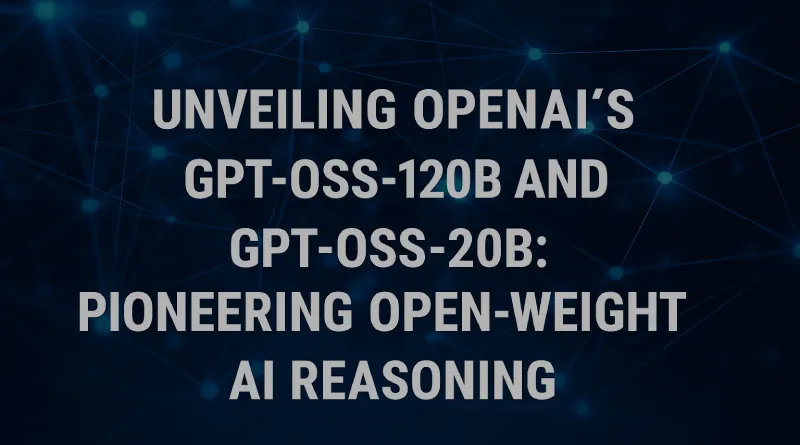The gpt-oss-120b, consisting of 117 billion parameters, compares with OpenAI’s own O4-mini model in terms of reasoning, coding, and problem-solving actions run in an effective manner on an 80 GB GPU. Its miniaturized model, gpt-oss-20b, which has 21 billion parameters, is comparable to or better performing than O3-mini in math and health benchmarks and can run on devices with only 16 GB of RAM, making it work perfectly in edge computing. Both tap into a mixture-of-experts (MoE) design-construct; only 5.1 billion and 3.6 billion parameters are fired with each token, respectively, maximizing throughput and lowering inference costs. Such efficiency is a game changer in India, as 900 million smartphone users (Statista, 2025) there are mostly resource-constrained devices to be found.
Such models are very efficient when it comes to more advanced workflows; they enable chain-of-thought, tool use, and calling functions, which is why they can be used in, e.g., healthcare diagnostics or in educational tools. The safety checks done by OpenAI, documented in a blog post, reveal that there are strong guardrails against the malicious fine-tuning, though there is a tendency towards slight hallucination characteristics because of the smaller knowledge bases than flagship models.
The release marks a recall to its open-source roots by OpenAI, which has the factor of competition with DeepSeek, Llama, and Mistral AI, and user demands demanding transparency. This was highlighted by CEO Sam Altman as reclaiming the OpenAI mission of democratizing AI with SiliconANGLE. Dave Vellante added that the proprietary moats of APIs that Goliath platform providers can currently enjoy are narrowing and becoming increasingly focused on data and tools. Such openness may drive Indian innovation, especially in Bengaluru, which is home to 40 percent of AI start-ups (Tracxn, 2024). This would mean tailoring models to local languages such as Tamil or Hindi, where only 25 percent of content has been translated (Google India, 2024).
The cloud providers such as AWS are set to integrate these models, and this will increase the enterprise adoption of the industry in the 200 billion dollar IT industry in India (NASSCOM, 2025). This blended strategy of on-device inference and cloud-aided inference can accommodate the heterogeneous infrastructure India has: data centers in cities and cell towers in the country.
The compatibility of GPT-OSS models with the edge solves the Indian power and connectivity issues, as 30 percent of Indian villages do not have a stable electricity supply (NITI Aayog, 2024). The openness may have the potential of emboldening startups to create affordable AI applications; however, bad actors can exploit it, an issue also flagged on X by @AIEthicsIndia. As GPT-5 approaches, the models will act as a testbed and may have knock-on effects on the governance of AI, which India is currently working on in preparation for implementing in 2026 (MeitY).
These models are made available in the OpenAI repository, where developers can download them and optimize them for specific tasks such as fraud detection in the fintech industry or personalized education. Nonetheless, the hallucination problem needs a potent verification, particularly in the medical field, where 20 percent of the AI errors result in misdiagnosis (WHO, 2024). To limit the bias, Indian companies should invest in the localization of data sets that will require the use of tools such as Hugging Face that allow customization.
The gpt-oss-120b and gpt-oss-20b are a turning point where they fulfill both performance and openness. In the case of India, they create an opportunity to become a leader in AI deployment, but the path to success solely depends on how it will be possible to ensure that the infrastructure deficiencies are being resolved and potential ethical hazards are mitigated. With GPT-5 on the horizon, such models have created a new standard regarding collaborative AI development.


